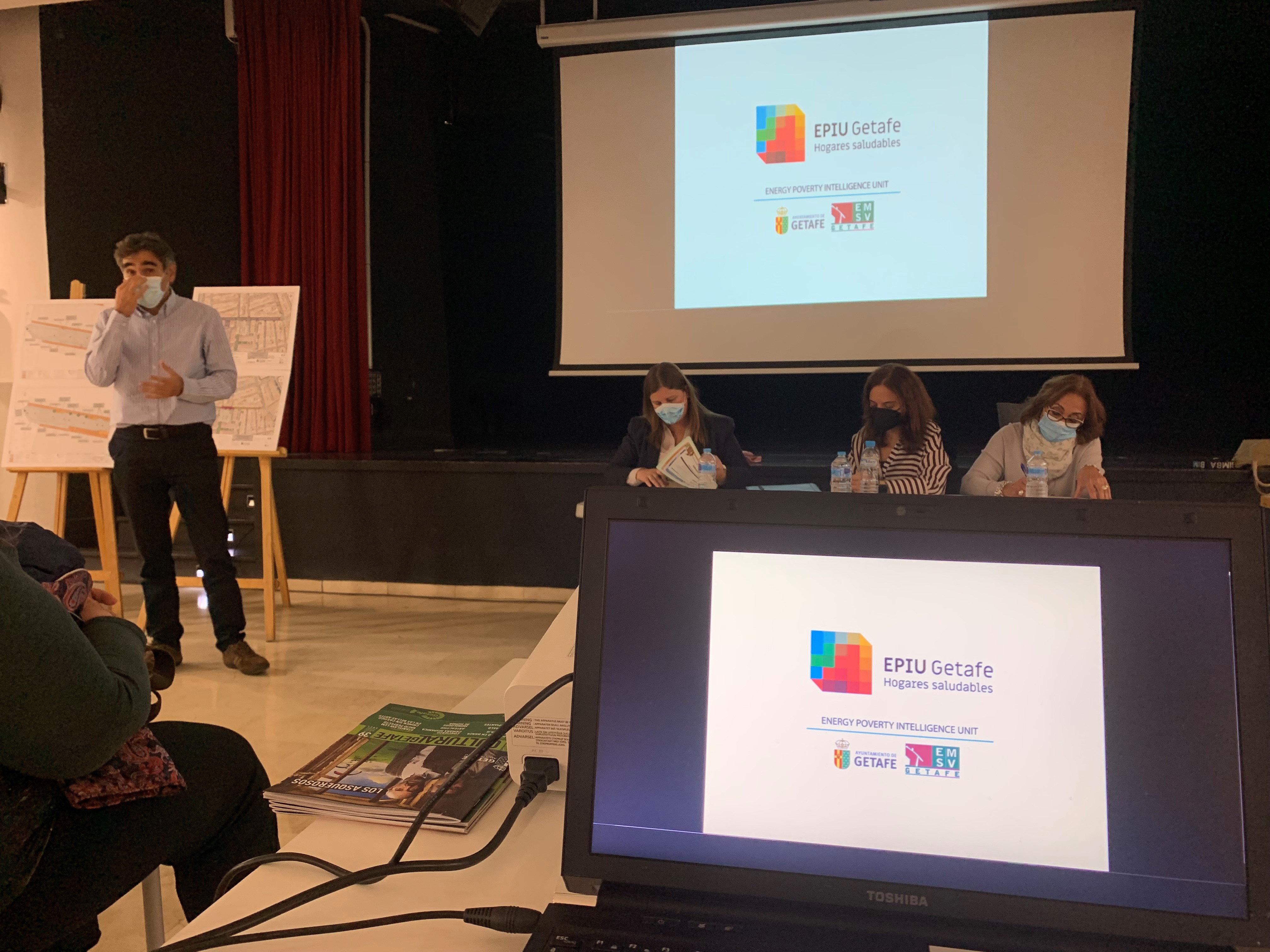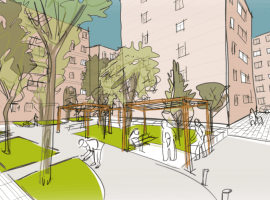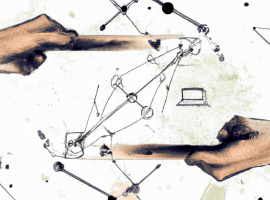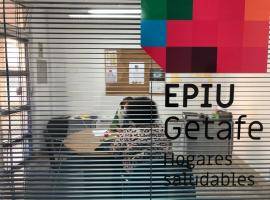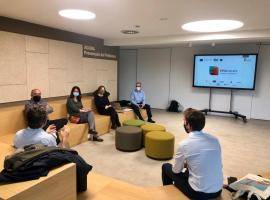During the implementation phase, EPIU was analyzed following seven implementation challenges. This journal, produced one year after the project was finished, approaches the lessons learned and recommends to other urban authorities, considering those challenges as perspectives. Leadership, public procurement, organizational arrangements within the urban authority, a participative approach for co-implementation, monitoring and evaluation, and upscaling highlighted key difficulties Getafe faced when implementing EPIU and are also helpful now to emphasize lessons learned and recommendations.
Lessons learned
Strong leadership is crucial for navigating the complexities of urban innovation projects. Although leadership is traditionally seen as a top-down mechanism which, in the case of local authorities, is derived from the city mayor to the local councilors and then to the middle managers and civil servants in charge of delivering the public services, the complexity of innovative projects like EPIU makes it necessary to exercise leadership from different angles. In this light, promoting positive leadership in EPIU has implied not only focusing on the top-down traditional role of policy-makers but also on empowering all the people involved at all levels of the project and with a stake in it, from the social workers at the OHS to the chief directors of the departmental areas involved in the project. Fostering leadership among all employees participating in EPIU has been an act of empowerment that has provided highly positive results, both for the project and the employees working on it.
Public procurement refers to the process by which public authorities purchase goods, services, or works from the private sector. Public procurement processes must not be isolated and only related to the specific project on which they depend, but rather as part of a broader and encompassing set of procurement processes being deployed simultaneously by the city council. The limited available resources (mainly human resources) to which city councils are subject makes it very important to prioritise the most urgent services to be contracted. In light of this, it has been crucial to understand the planning and timing under which EPIU procurement processes have been performed and how these fit into the whole set of procurements being simultaneously processed and in the pipeline. In this sense, negotiating the priority of EPIU procurement processes about the other priorities of the local authority and coordinating them within each department has been critical to ensure a timely implementation.
UIA projects typically address complex, multifaceted urban challenges across various policy areas. To promote a participatory approach, engaging interest groups and civil society organisations representing citizens is more effective than attempting to engage individual citizens directly. The main lesson learned from this challenge on EPIU was the need to identify the leading civil society actors with a stake in the project at a preliminary stage, approach them, and establish a cooperative framework they feel comfortable with. This undoubtedly facilitates the implementation of a real co-implementation process within the project.
Engaging citizens and stakeholders in the design and implementation of urban projects is a core principle of UIA. However, ensuring meaningful participation takes time and effort. Organisational arrangements that imply breaking silos at the municipal level are always challenging to put into practice. Through EPIU, the implementation team learnt the importance of looking for "allies" within the municipality, namely civil servants and personnel with a high level of responsibility in key areas of the project, to make the necessary changes possible. Engaging key personnel is essential, specially making them feel part of the project and the changes it aims to achieve, as this is necessary for them to step forward to collaborate and think outside the box to find solutions to the challenges posed by innovation. This is nonetheless a long process that requires perseverance, empathy, continuous support from the city council mayor and elected councillors, and a very clear political commitment throughout the project's lifetime.
UIA projects often test new and experimental solutions, making it difficult to define clear metrics or benchmarks for success. The challenge lies in creating adaptive M&E systems that capture qualitative and quantitative data and can provide valuable insights even as the project evolves. Through the M&E of EPIU, MUA has understood the need for an external expert to provide an objective and non-biased evaluation of the project. Given the project's complexity, this is an admittedly cumbersome, time-consuming and costly process that requires great effort from the project management and some project partners. Making all the necessary resources (material, data, time, knowledge) available for an external expert to evaluate the project properly is, therefore, highly demanding and, if not properly designed, may be a costly process. In this regard, it is crucial to pay special attention to the resources needed to produce monitoring and evaluation that is fit for purpose and weigh up the costs associated with it against its expected return. Not doing a realistic dimensioning of the budget, resources and expected results may result in a M&E that doesn't provide value for money or meet expectations.
Related to the communication with beneficiaries, the EPIU consortium tried to align some of its key communication actions with other events being done at the local level, such as local fairs, public events (eg: energy week, local festivities of neighbourhoods), recurrent events that take place in the city during the year (neighbourhood assemblies, energy retrofit roundtables with local stakeholders). By trying to piggyback on those events, the project secured an audience. It communicated more efficiently and optimised resources, obtaining a highly positive response from the target group.
One of the key ambitions of UIA projects is to develop solutions that can be scaled up, either across the city or to other regions and contexts. The reality in EPIU is that the most significant impact has been seen after the implementation period. The 4-year period of EPIU served as a tester of the energy poverty intelligence unit, and it is only now that it has to demonstrate its effectiveness in mitigating energy poverty at the local level. Hence, the main learning from the EPIU experience is that an innovative project like EPIU must be embedded in a broader and long-term strategy, in this case, related to energy retrofitting, social services and IT, that makes its upscaling process aligned with the municipal priorities. In this way, its continuation and expansion can be more easily secured, and its full potential can be realised.
Addressing operational challenges reflected the complexity and ambition inherent in urban innovation projects such as EPIU during their implementation, but it also brought a list of lessons learned that will be kept as treasures in Getafe.
Recommendations to other urban authorities who wish to implement similar innovative projects
For urban authorities looking to implement innovative projects similar to EPIU, it is advisable to adopt specific strategies and best practices to navigate the complexities of such projects. Here are some recommendations based on lessons learned from the experience with EPIU.
- Ensure a clear and committed leadership with the support of key stakeholders and high-level political figures. In the case of Getafe, the mayor was involved from the beginning, which positively affected the project. Besides, projects like EPIU that run for 4 year may suffer political shifts, so securing political backing at other levels is crucial too. One option could be to design a Steering Committee with representatives from different levels of governance and relevant stakeholders.
- Traditional procurement rules can be a barrier to innovation. An option that may be more limited to Spain is to train and engage Local Government Secretaries, Controllers, and Treasurers in the project from the beginning to make the innovations easier to understand.
- Break down silos and promote cross-departmental collaboration from the design phase. If the project starts without all departments involved, it will be complex to commit them for collaboration later. Everyone needs to feel they are part of the project, and the design phase is the starting point. The same happens with the local communities: engaging citizens and other stakeholders improves the project's design, relevance and sustainability and increases public buy-in and trust from the beginning.
- From EPIU's experience, considering an external expert who develops a robust M&E framework from the start would have helped define clear success metrics and indicators.
- To dedicate a team from an early stage of the project to plan the sustainability of the project. Operational teams are busy implementing the project, and they relegate sustainability as a priority. The same strategy can be proposed to ensure that the innovative practices developed during the project are embedded into local policies and governance structures. Setting up a separate team to ensure that the project’s innovations can continue beyond the project’s lifecycle could be a good strategy to give it a priority.
- To promote strong partnerships with other municipalities and networks during the implementation phase of projects so the project results can permeate better and be proposed as scalability in different territories. Besides, participating in EU networks, conferences, and urban innovation events or publishing reports, case studies, and other documentation can be used by other urban authorities to replicate and adapt successful approaches.
- Innovative projects are complex, and the projects need to invest in training at internal level in procurement, digital tools, sustainability, etc.
- Develop a clear communication strategy that considers the different targets of the projects. EPIU, for example, needed to reach citizens suffering from vulnerability, politicians, and private companies… so different communication strategies may be considered.
- Risk management plan built only at the beginning of a project may result ineffective as continuous new and unforeseen challenges will appear. An option would be to allocate resources for risk management at all levels of the implementation phase.
- The collaboration with the private sector in EPIU could have been stronger. Establishing solid partnerships can increase the project’s impact and financial sustainability.
This list of recommendations is not exhaustive and definitive as it only responds to EPIU’s experience during the years of implementation. However, it is a good starting point for those municipalities willing to implement similar innovative projects.

